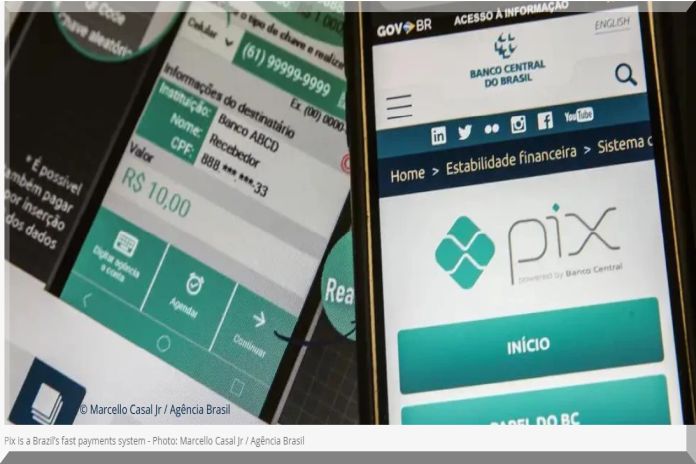By Douglas Randall, Maria Teresa Chimienti, Jon Frost, and Carlos Cantú
A decade ago, if someone living in San Jose, Costa Rica wanted to send money to support a family member suffering the impacts of a tropical cyclone, they might have had to travel to a bank branch, pay a sizeable fee, and wait several hours or even days for the money to arrive in their family member’s account.
The person in San Jose may have just decided it was easier to send cash with a friend travelling to her hometown – taking a risk that the money would be lost or stolen and ensuring that it would not arrive quickly. No longer. That same person can now make an instant, free account-to-account transfer via SINPE Móvil, the user interface of the fast payments system (FPS) operated by the Central Bank of Costa Rica. The family member can receive the funds within seconds, a critical feature when such transfers offer a lifeline in climate or health emergencies.
Cash has long been king in Latin America. Financial institutions were unable or unwilling to provide digital payment instruments that matched the simplicity and convenience of paper money. Transfers across financial institutions were impeded by a lack of modern and inclusive underlying payment systems and outdated legal/regulatory frameworks. This limited the ability of consumers to make transactions across a range of providers, channels, and products – known as interoperability. But fast payments offer consumers a fast, reliable, and secure digital alternative to cash, across a range of use cases – even for cross-border payments in the case of El Salvador’s Transfer 365 and the systems of neighbouring Central American countries.
Fast payments – also known as instant or immediate payments – are characterized by real-time receipt of funds in the payee’s account and around-the-clock service. Many are aware of Brazil’s fast payments success story, epitomized by its FPS Pix. This service has become so ubiquitous in Brazil that it is used as a verb (“I’ll Pix you!”).
But it is not just Brazil: the revolution in fast payments is sweeping across nearly all of Latin America, with huge implications for the affordability, convenience, and customer-centric design of digital financial services. This was evident in a recent workshop and peer-to-peer learning exchange hosted by the World Bank and the Bank for International Settlements (BIS) Americas office in Mexico City and attended by 13 central banks from across Latin America.
Numbers tell the story. The number of fast payments per capita in Latin American countries has grown rapidly, from close to zero in 2019 to more than 3 per month in Peru, 12 per month in Costa Rica, and 24 per month in Brazil. And indeed, cash in circulation in many Latin American countries has been declining in parallel.
Why are fast payments important?
- First, fast payments improve the daily lives of people by reducing cost and convenience frictions in common transactions.
- Second, by enabling instant transfers, fast payments can help ensure the financial resilience of those suffering from emergency situations. For example, in the event of climate or health shocks, these payments facilitate quick remittance transfers and emergency government-to-person payments.
- Third, since payments are often the entry point for the unbanked to access a broader range of financial services like savings and credit, better payments products are likely to lead to greater financial inclusion, for example by leveraging transaction data in open finance models to reduce informational asymmetries and improve customer-centric product design.
- Finally, when designed to serve as digital public infrastructures, fast payments can help foster competition and economy-wide digital transformation, serving as key components of e-commerce models and e-government innovations supported also by new overlay services such as “request to pay” and the use of quick response (QR) codes.
A common theme throughout the recent workshop – confirmed in recent empirical analysis at the BIS and World Bank’s Project FASTT (an initiative that aims to drive global adoption of fast payments) – is the catalytic effect of an active role by central banks in fostering fast payments. Central banks have been actively involved, either through taking on an operational role in the administration of FPS (as is in the case in Bolivia, Brazil, Costa Rica, El Salvador, Mexico, and others) or via deliberate regulatory actions to promote fast and interoperable digital payments (as in the case in Argentina, Peru, and others). A focus on user experience and clear rules on participation and pricing were also recognized as success factors.
Yet challenges remain, and not all countries in Latin America have begun their fast payments journey. Participants in the recent workshop flagged risk management – including related to fraud and cybersecurity – as a primary challenge in ensuring the reliability and safety of fast payments. And in several countries, fast payment innovations are impeded by antiquated legal and regulatory frameworks. Central banks launching their own FPS must also undergo significant institutional transformations to facilitate new operational responsibilities.
Without a doubt, many Latin American countries are undergoing a transformation in their digital payment ecosystems, and fast payments are playing a pivotal role.
The views expressed in this blog are those of their authors and not necessarily the views of the World Bank or the Bank for International Settlements.





